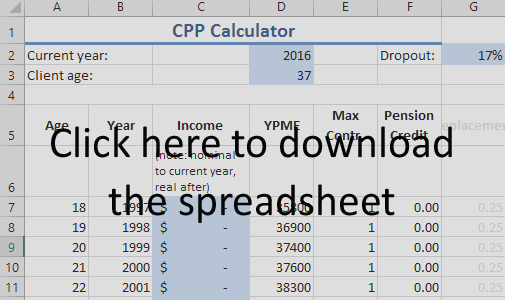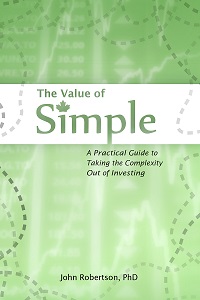Winter Tires and Bang-for-Your-Buck
December 17th, 2016 by PotatoWhen it comes to safety and your vehicle, seatbelts are likely the obvious winner in bang-for-your-buck. They’re cheap and save a whole bunch of lives. Yet when I was a kid, I knew adults who wouldn’t wear their seatbelts and just “wouldn’t drive like idiots.”
When I was a cheap grad student driving an older car, I also said something similar as a rationale for not getting winter tires. I didn’t want to buy dedicated rims for a car that might only live another three or four years. I didn’t drive to work so I could always plan my driving to avoid the worst winter storms, and I mostly drove on the highway which was excellently plowed. Well, of course none of that was really true: there were always the storms that came in by surprise (or because I didn’t always check the forecast), or the times when it was important to brave the weather, or the times when most of the route I wanted to drive had been plowed and salted, but part of it was slushy or icy. And even driving carefully there would be a time or two when instead of stopping at the line as I meant to, I’d stop in the crosswalk. Or I’d slip and spin the wheels trying to get started. Never with anyone there, thankfully, but visceral reminders that you can’t cheat winter.
Finally, my tires needed to be replaced. And at the time a new kind of tire was on the market, an “all weather†tire (vs “all seasonâ€) called the Nokian WR. They’re good enough in winter conditions to earn the mountain+snowflake mark of winter tires, but the rubber stays hard enough in the heat that you can drive them all year long, so no need for a second set of rims and twice yearly change-overs. They were such a huge improvement over all seasons in winter driving.
So huge that I didn’t need fancy equipment like tape measures and controlled conditions to see the difference. It was like night and day in the ability to drive, and I was never going back to trying to muddle through winter with all-seasons (or “three seasons†as called by car buffs).
Now, they are a bit more expensive, but for the amount of safety edge they give you, it’s really cheap. And important – I definitely recommend them to everyone. After all, “Tires are the sole point of contact to the road. Do not underestimate their importance.†And I used the words “night and day†above – go and find people who have put winter tires on their car and see how many express the increase in traction that way. Yes, it’s anecdotal data, but try to find the number who say “meh, I’m not sure winter tires were worth it.†I could find a few such opinions online, but in person everyone I knew who had got winter tires was satisfied with the value for them and would not go back. The only people who weren’t sure winter tires were worth it were people who hadn’t tried them.
I idly speculated on Twitter that winter tires were possibly the second-best bang-for-your-buck when it came to safety, after seatbelts. Determining how much added safety you get is a bit of a tough metric to come up with, but we can bracket in the cost side fairly easily.
For my Nokian WRs, they cost about $200 more, all-in, than the set of three-season tires I would have purchased instead. There was no hassle about changing them over, storage, etc. So if we assume that a car would need about three sets of tires in its lifetime, that’s about $600 total.
For dedicated winter tires on my Prius, I paid about $850 for the first set, which included steel rims. Then, I had to either pay $20-30 each season for a change-over, or $100 for a jack and jack stands to do it myself (plus the hassle of actually doing it myself). However, the cost of the tires is offset a bit because while the winter tires are on the car, the three-seasons are not getting worn down. So the added cost of winter tires for a 15-year car lifespan would be about $850 for the first set, $650 for the next two sets, $600 for 30 change-overs, less $800 for saving a bit over one round of three-season replacements. $1950 all told over the lifetime of the car.
Safety margin added? Huge. Tremendous. Just enormous. See this video (H/T Preet) for a demonstration of just how much extra traction winter tires provide (and don’t forget that even on clear, dry roads, the cold temperatures alone increase the stopping distance of three-season tires).
What would some other bits of gear people often pine over for their cars for safety reasons?
How about all-wheel-drive, which many people say they need for winter driving? Well, on a Rav4 adding AWD will run you $2,265 on the sticker price, and it will decrease your fuel economy by about 0.5 L/100 km. The total lifetime cost could be over $3,500. Safety margin added? Really not much. As much as people swear by AWD, it really does not add much on safety. If you can’t “get up and go†on two wheels, it’s maybe a sign you shouldn’t be driving, rather than that you need help from the rear wheels. Plus every car has all-wheel-stop (i.e., brakes on all four corners), so AWD sometimes provides a false sense of confidence when you get going, which is shattered when you try to stop. I’d take a FWD car with winter tires over an AWD SUV with three-season tires.
Electronic stability control is another feature that adds a margin of safety in winter driving, helping you to keep steering in the direction you want to go and preventing an uncontrolled skid. This one also has a fairly high addition of safety. However, I can’t even find a set of models to compare to tell you how much extra it costs now because many manufacturers have made it standard equipment — and when I was thinking of ranking features by bang-for-the-buck, this one was one I thought might possibly beat out winter tires.
Conclusion
Winter tires will cost a bit more money than three-season tires. However, they add a huge margin of safety to your winter driving. In terms of the bang-for-your-buck, they’re well worth the money in my opinion, the only thing you can optionally buy for your car that provides that kind of value. Plus you can think of them like insurance: you pay a bit more to get them and hope that you never need those extra few meters of stopping distance – you can still not drive like an idiot, but it’s there if you need it.
Go ahead and ask around, this is one area where there is virtually zero disagreement from experts and those who have tried it. Winter tires are awesome and well worth the price.
With winter-rated all weather tires now available, there really is no excuse to not at least have something winter-rated and better than a typical all-season. Not having storage or the ability to do a change-over is no longer an excuse, and the extra cost is so small that if you can afford to drive in the winter at all, you should be able to afford to drive on something decently safe.
What if you really can’t afford it? Like, driving at all is barely within your grad student budget? This may be bad advice in the end, but if you need to sacrifice something on your car to afford the trade-off for all-weather cars, sacrifice an oil change. Many people change their oil twice per year – dropping one of those should free up the money you need to buy a slightly better set of tires.



 Questrade: use QPass 356624159378948
Questrade: use QPass 356624159378948 Passiv is a tool that can connect to your Questrade account and make it easier to track and rebalance your portfolio, including the ability to make one-click trades.
Passiv is a tool that can connect to your Questrade account and make it easier to track and rebalance your portfolio, including the ability to make one-click trades.